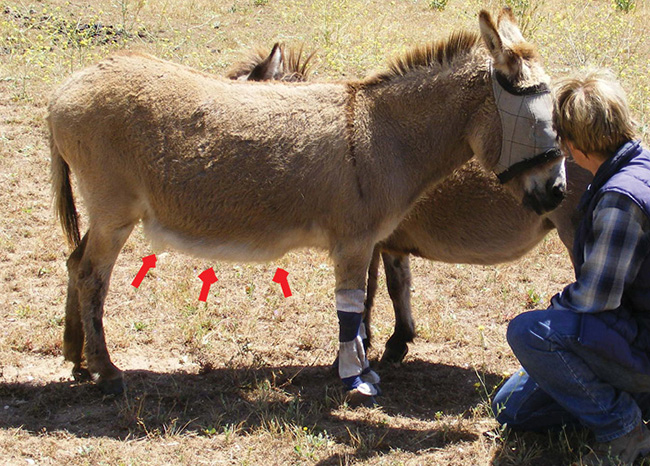American Farriers Journal
American Farriers Journal is the “hands-on” magazine for professional farriers, equine veterinarians and horse care product and service buyers.
A: With the horse tied up and ready for shoeing/trimming, it’s all too easy to just start working on it. However, there are good reasons to take time to look the horse over and watch it walk prior to attending to its feet.
If a horse walks off lame after you have trimmed/shod it, you can guess whom the owner will blame. But if you make note of and point out to the owner that the horse is lame before you start, it takes the blame away from you.
Walking the horse will allow you to judge foot balance, but it also gives you the opportunity to observe the condition of the horse, how it behaves and any lameness issues or physical changes, such as swelling of the legs.

The owner had not noticed the ventral oedema on this mini donkey. With no obvious cause for the swelling, this should be checked by a vet.
Most owners are observant enough to notice obvious problems, such as wounds or a horse with colic, and will call a vet. It’s the less acute, less severe or long-standing conditions where the farrier may have the opportunity to alert owners to the need for veterinary attention.
The advice a farrier gives will…